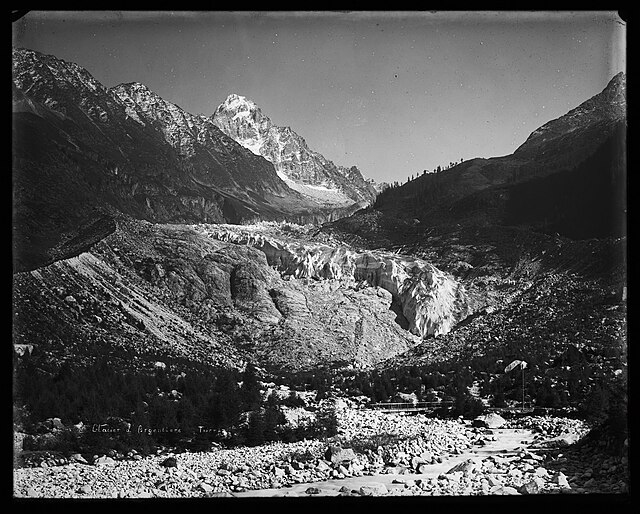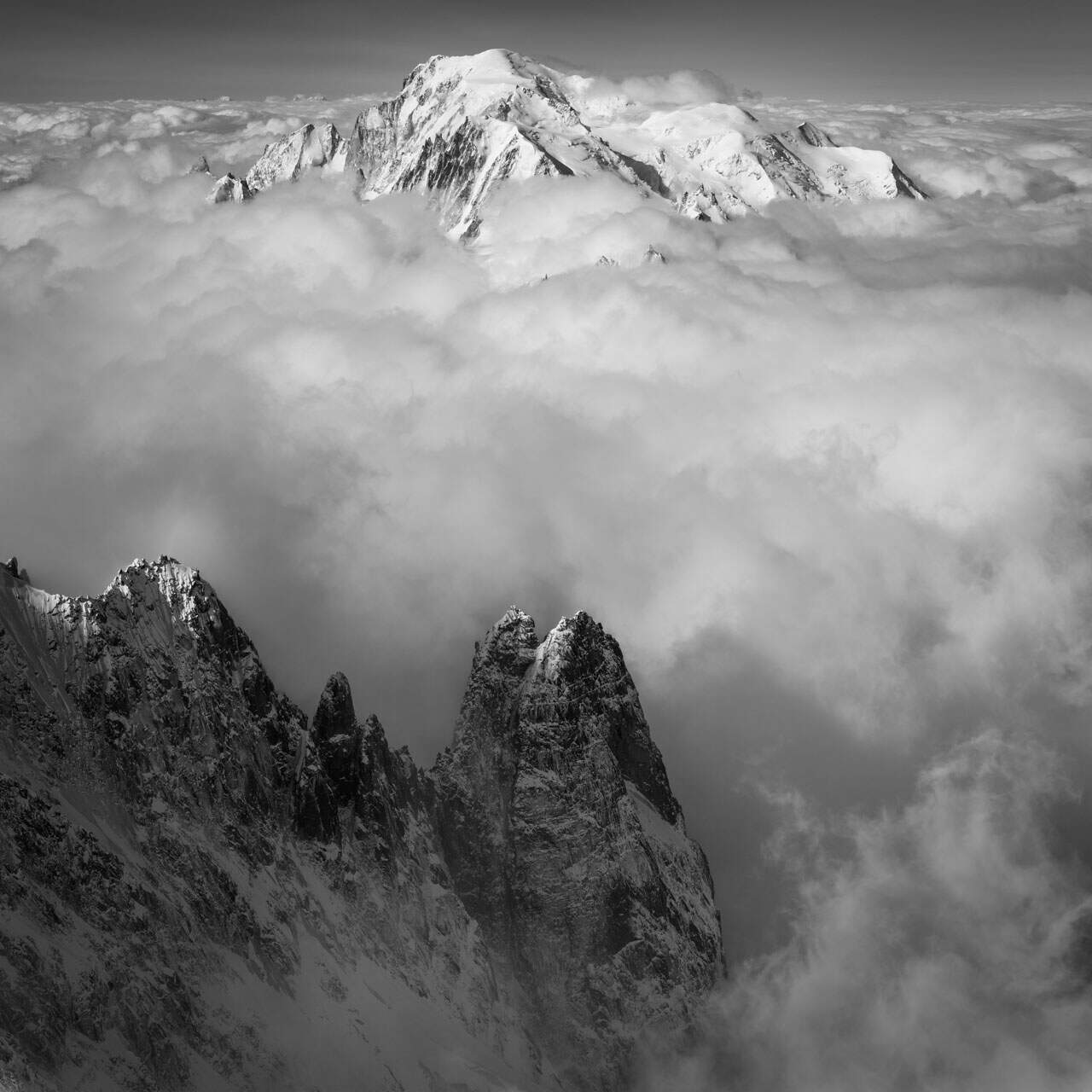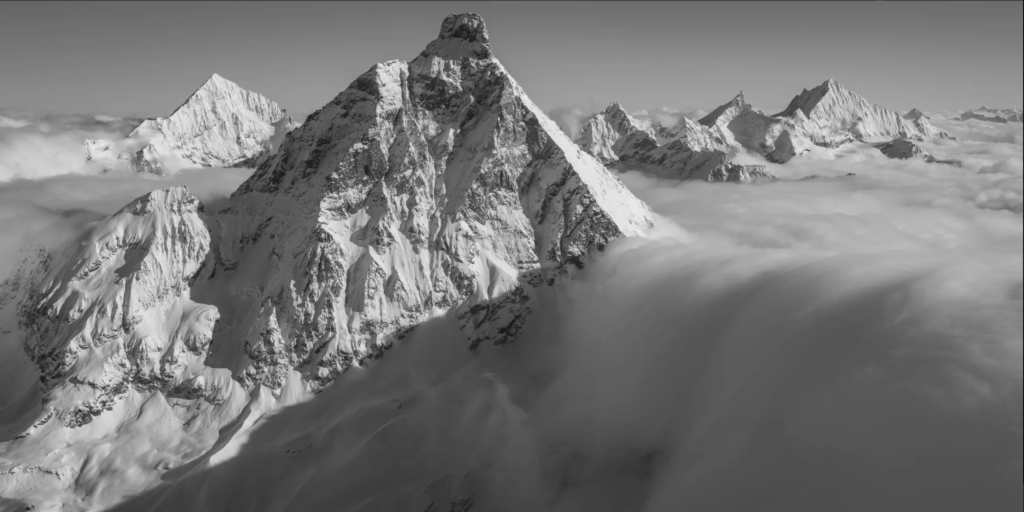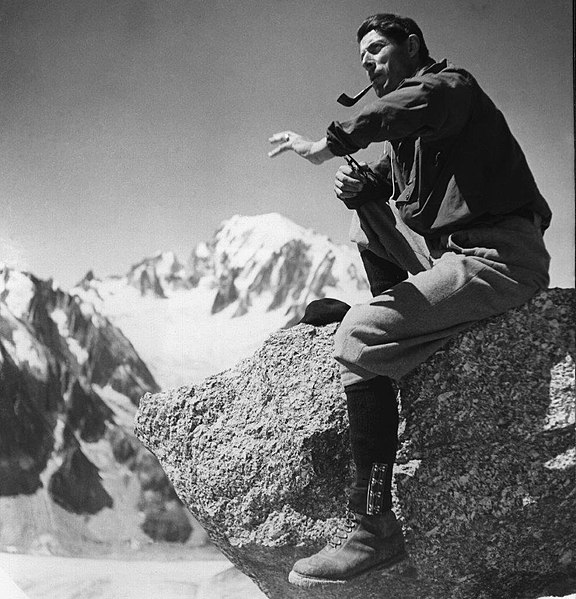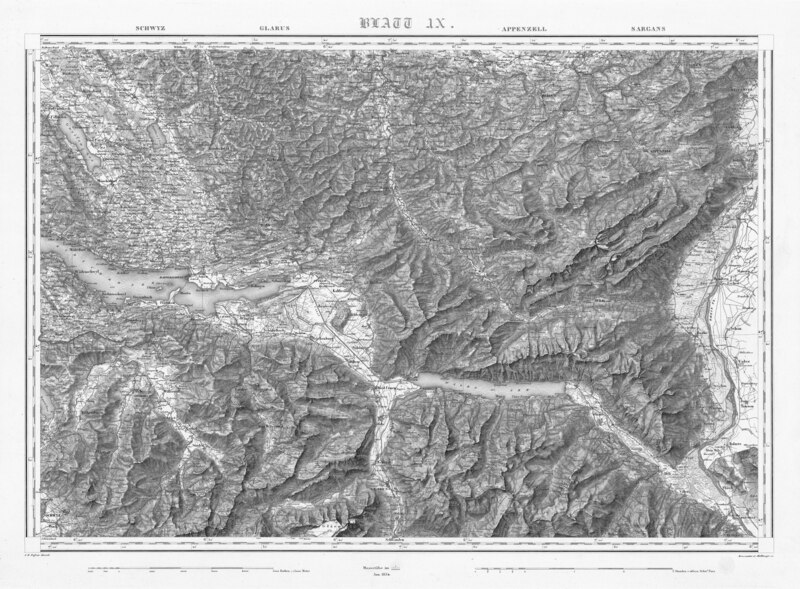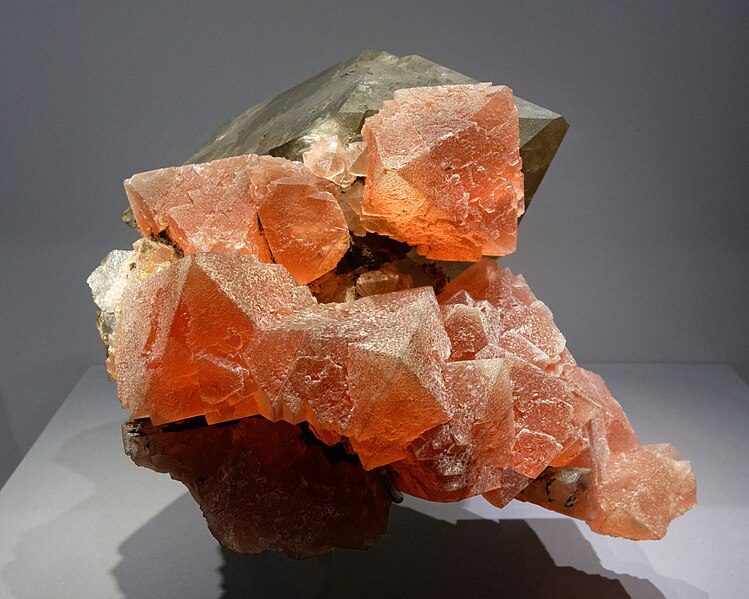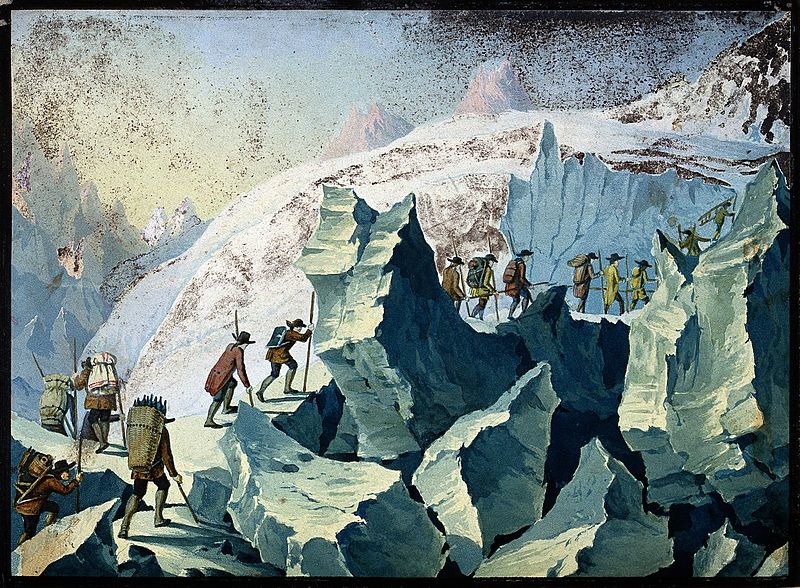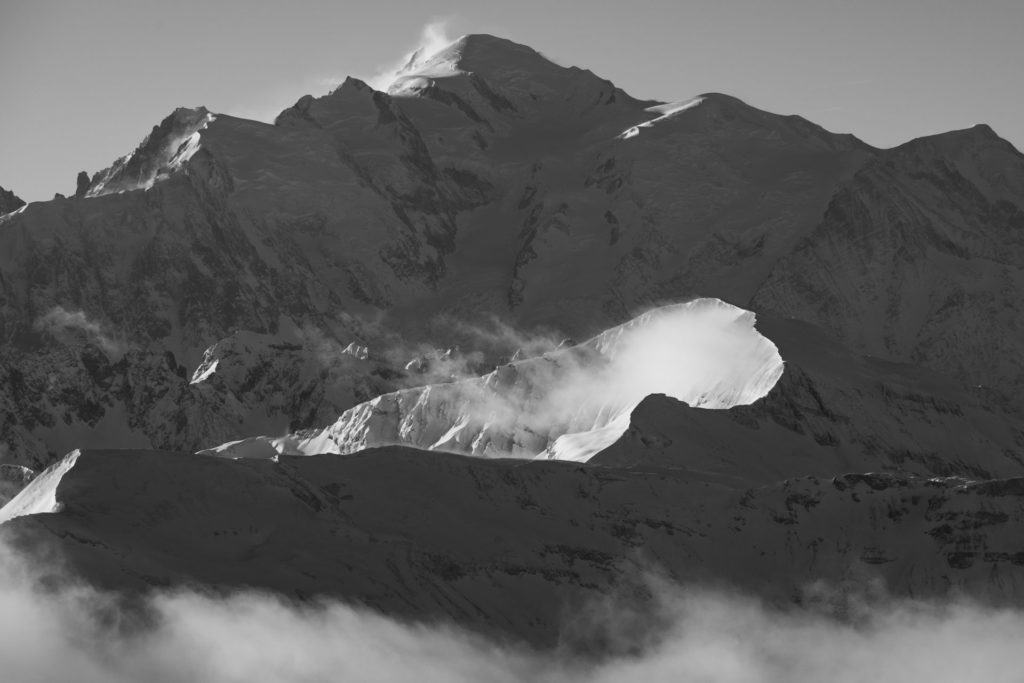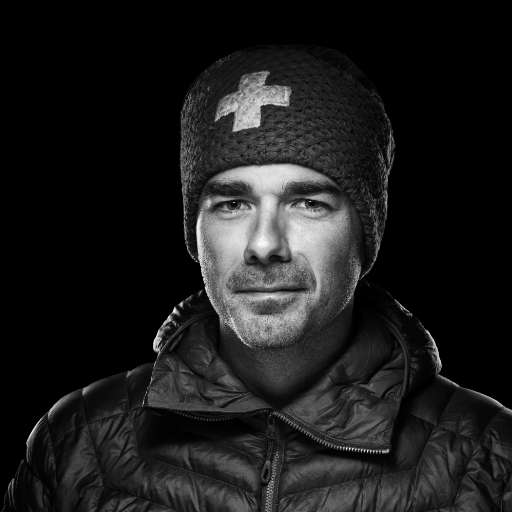From father to son, the Tairraz family have dedicated their art to the Mont Blanc massif. Seasoned mountaineers immortalizing the Alps while adapting to the challenges of their time. Four generations of passionate, visionary men fascinated by the splendor of the Roof of Europe. This is the story of the Tairraz family, pioneers of alpine photography in Chamonix.
Joseph Tairraz: Pioneer of alpine photography in Chamonix
Joseph Tairraz was born in Chamonix in 1827. Nurtured by the beauty of the fertile valley and arid summits , he dreamed of exploring new horizons. He soon became a guide, leading wealthy foreigners eager for grandeur to the high mountains. As he climbed Mont Blanc and neighboring summits alongside mountaineers from all over Europe, he discovered the art of photography. By the age of 30, he had mastered the daguerreotype technique. In 1857, he bought a darkroom in Geneva and opened the "Photographie alpine Tairraz" studio in Chamonix . From then on, he enjoyed taking portraits of guides, mountaineers, tourists and local residents.

But above all, Joseph Tairraz is the man who revealed the high mountains to the world. Despite the weight of his equipment, he ventured into Mont Blanc and took some exceptional shots from up there. Never before had the general public contemplated these marvellous landscapes adorned with eternal snow. How could man have imagined that the Alpine sky could conceal a kingdom of rock and ice? Thanks to advances in photography, nature now reveals its unsuspected treasures to the world.
In 1861, Joseph Tairraz made history when he and the Bisson brothers took the first photograph of the Alps from the summit Mont Blanc. The feat was acclaimed by the public, who flocked to Paris to admire the pictures on display at the Emperor's palace. In 1862, Théophile Gautier himself wrote about it in the Revue photographique. But what happens to a masterstroke if there's no trace of it? The famous photograph has now disappeared, no doubt swept away by the floods that hit Chamonix in 1920. Leaving its place in the memory of mankind to the cliché taken under the same conditions by Charles Soulier in 1869.
Joseph Tairraz was a pioneer of alpine photography, but his art also served the scientific cause. Ever since his first steps on the slopes of Mont Blanc, he has been fascinated by its glaciers and their movements. He took part in the scientific expedition led by glaciologist John Tyndall on the Mer de Glace. A few years later, he decided to install milestones on the glacier's shores. Thanks to these fixed landmarks, the photographs he took each year at the same spot enabled him to follow the glacier's evolution over time. After him, his son and grandson continued the experiment in honor of Mont Blanc and its Mer de Glace. Thus he founded the Tairraz dynasty in Chamonix , driven by a love of photography and the history of the Alps. Thanks to Joseph Tairraz, who died in 1902, photography now has the highest summits in Europe as its muse.
Georges I Tairraz: Forerunner of large-format mountain photography
Georges I Tairraz, born in 1868, took over from his father. While Joseph Tairraz was self-taught, Georges went to Paris to study photography with portrait painter Pierre Petit. On his return to Chamonix in the 1890s, he took over the reins of the family studio, raising it to the status of an institution. More and more tourists flocked to his door, eager to have their portrait taken by him. So he played the game, turning " peasants into star images ", as his grandson, Pierre Tairraz, would later testify. His shots sometimes give rise to unusual scenes. He immortalized men and women dressed in their finest finery on the Mer de Glace, or balancing on a ladder to cross a crevasse. His customers are won over, and his reputation extends far beyond Chamonix.
A shrewd businessman, Georges seized the opportunity to market his mountain photos. He published postcards and souvenir albums featuring his photographs and those of his father. The newspapers L'Illustration and La semaine de Chamonix finally published some of his works, helping to make them better known.

When the mountain calls, George leaves his studio for a while to climb its rock and photograph it. He accompanies mountaineers on their expeditions, and it's no mean feat. At the end of the century, photographic equipment was still heavy and cumbersome. He had to be able to carry the load, but also to master the technique perfectly if he was to succeed in taking pictures in such extreme climatic conditions. Using bulky 50 x 60 cm glass plates, Georges I Tairraz was a pioneer of large-format mountain photography. Always on the lookout for exceptional vantage points, he was also one of the first mountaineering photographers. He achieved the feat of providing photographic coverage of the second ascent of Petit Dru, one of Mont Blanc's most impressive peaks.
History, however, retains only a faint memory of his daring. Most of his photographs, like those of his father, were destroyed in the Chamonix floods of 1920. But the remnants of his art, on giant plates of remarkable detail, bear witness to his skill and ambition. He never ceased to highlight the high mountains, their inaccessible peaks and their most beautiful panoramas. He also immortalized the evolution of Chamonix and the beginnings of winter sports. And he was the man whose eye brought photography into the art of composition. George I died in 1924, passing the torch to his son George II.
Georges II Tairraz: Visionary photographer and filmmaker at the summit the Alps
The work of Georges II, born in 1900, was inspired by the technological advances in photography at the beginning of the 20th century. Cameras became lighter and easier to transport to the high summits Mont Blanc. Georges II took his guide's diploma and left the studio to follow the greatest mountaineers on their ascents. His Leica camera, with its revolutionary 24 x 36 format, accompanied him on all his expeditions. His son Pierre would say of him: " My father brought altitude to images ". His photographs capture the movement of people, the very essence of life. His art is pure, poetic and sublimates the beauty of the high mountains.
Next in his father's footsteps, Georges also entrusted his work to the publishing industry. They were used to illustrate brochures and books on Mont Blanc , as well as mountain articles in Vu magazine, the first news magazine to feature photographs. By the end of the 1940s, the Tairraz family's art was enjoying national renown, thanks to the growing success of mountain books. The works of Georges and his son Pierre illustrated books by Roger Frison-Roche and Gaston Rébuffat published by Arthaud, pioneers in this field.

By 1930, Georges fils had expanded the possibilities of the Tairraz dynasty. Thanks to him, his name entered the history of mountain cinema. Some directors called on him as a cinematographer, while others entrusted him with the shooting of the most perilous scenes in their films. In 1934, he directed his first documentary, L'ascension des aiguilles Ravanel et Mummery. He then met Roger Frison-Roche and Gaston Rébuffat, famous mountaineers, and became close friends. Together, they brought the high mountains into the modern era of cinema. In 1943, Georges II joined the film crew of Premier de cordée as a technical advisor. He also took part in Roger Frison-Roche's expeditions to the Hoggar and Antarctica, while alongside Gaston Rébuffat, he made two films at the summit the Alps. When he passed away in 1975, he paved the way for his son Pierre, who led the Tairraz dynasty to its apogee.
Pierre Tairraz: Mountain photographer and filmmaker in the age of modernity
Pierre Tairraz, the last virtuoso in his line, was born in Chamonix in 1933. From an early age, his father introduced him to photography and cinema. In the 1950s, he went to Paris to further his training. He returned to the foot of Mont Blanc with degrees from the École nationale de photographie et de cinématographie and the Institut des hautes études cinématographiques (IDHEC). He is now ready to work alongside his father, who teaches him mountaineering and high-altitude shooting techniques.
Even more than his father, Pierre Tairraz sees his work as an ode to the high mountains, dazzling and masterful. He is passionate about the aesthetics of summits, the play of light on craggy rock. Through his art, he invites us to dream of a marvellous world, of a grandiose beyond. With Pierre Tairraz, the art of the image undergoes a metamorphosis. From black and white, he moved into color in the 1960s. A new universe he embraces with pleasure.

Like his fathers before him, the photographer is constantly innovating and reinventing himself. He used his photographs as illustrations for numerous books on the high mountains. His images were used to accompany several of Roger Frison-Roche's stories, such as Mont Blanc aux sept vallées, published in 1959, and 50 ans en montagne, published in 1974.
Pierre Tairraz also follows in his father's footsteps as a filmmaker. From an early age, he accompanied his father on film shoots and soon became his assistant. In 1952, he helped direct Roger Frison-Roche's film Sur les traces de Premier de cordée. He then joined his father and Gaston Rébuffat on the films Étoiles et tempêtes in 1955 and Entre terre et ciel in 1961. Numerous cinematic adventures followed, both in the Alps and around the world. For over twenty years, Pierre Tairraz gave the camera a prominent place, without ever abandoning photography. The last mountain photographer of the Tairraz dynasty, Pierre died in 2000, leaving behind him a priceless legacy.
The work of the Tairraz family: Pioneers of alpine photography and mountain films
The scope of the Tairraz family's work is both considerable and multifaceted. Leading figures in alpine photography, the Tairraz family committed their art to the future and its challenges. The results of the experiments carried out by the three eldest on the Mont Blanc glaciers from 1891 to 1933 constitute first-rate scientific data. The 200 photographs taken each year from the same locations enable us to track the evolution of glaciers now threatened with extinction by global warming. Mad lovers of the Alps, visionary artists, they gave themselves the means to achieve their ambitions and, despite the obstacles, fought to the bitter end to bring their finest projects to fruition.

For the Tairraz family are at one with the mountains. While their calloused hands cling to the rock, their spirit yearns for new challenges. To offer the world the beauty of the heights, to bring the summits into the hearts of all. That's their dream. Through images and the art of photography, to reveal the Alps and the Mont Blanc massif in all their ruggedness and intransigence. Danger, vertigo, solitude. The harshness of the rock, the icy wind. Everything that pushes man to surpass himself. This is what gives him the desire to live. The desire to exist, he who is nothing in the face of immensity.
True icons of high-altitude photography, the Tairraz family had a lasting influence on the visual arts. Even today, they are still role models, inspiring the work of many artists. They reveal the most intimate aspects of the mountain, immortalizing it, sublimating it and giving it a unique perspective. This "Tairraz gaze", sensitive and absolute, plays with lines, light and wind to create profound, poetic masterpieces.

In 2024, Grenoble's Musée de l'Ancien Évêché will be staging the first retrospective exhibition of Tairraz art. Thanks to a loan from their family, 120 photographs retrace the history of this dynasty. A book, Tairraz. Joseph, Georges I, Georges II and Pierre Tairraz form " a dynasty of photographers and mountaineers who are not interested in physical or sporting feats. They are there to sublimate the mountains, to magnify them. There ' s a respect and harmony between the photographer and the setting. That's what Sylvie Vincent, head curator of the Musée de l'Ancien Évêché, has to say about these four pioneers of alpine photography. With their incomparable vision, they left an indelible mark on the history of Chamonix , visual art and high summits.
